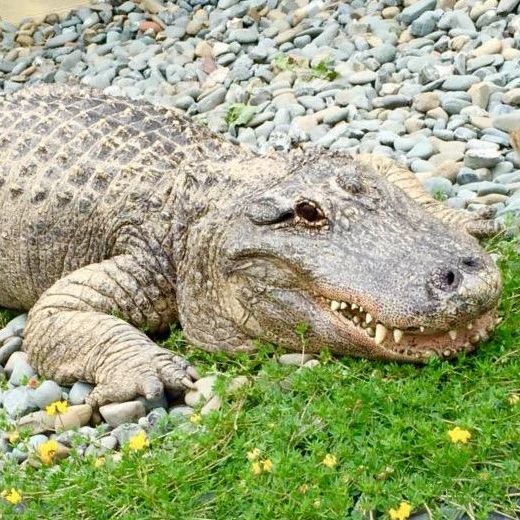Profile | Brutis

-
BirthdayMale, born circa 1975–1978
-
SpeciesAmerican Alligator
Alligator mississippiensis -
Professor ofPool construction
-
Field of StudyImportance of predators and aquatic adaptations for ectotherms
-
Food and Vet Care$99 per month | $1188 each year
About the species
RANGE | Alligators are native to the southeastern coastal wetlands of the United States, ranging from some areas in Eastern Texas to parts of North Carolina and extending to southern Florida where they congregate in the Everglades. These reptiles are usually found in slow-moving freshwater rivers but can also inhabit swamps, marshes, and lakes, occasionally also seeking out water sources in urban areas and pools in backyards.
FUN FACTS | These large reptiles are apex predators but are also indiscriminate feeders, hunting or scavenging on any available prey—large or small—depending on the size of the alligator, the season and locality. They often float in the water, resembling logs or debris floating on the surface, which makes it possible for them to approach other animals without causing alarm until it is too late to escape. When hunting large prey, they will often drag them into water and begin spinning, which disorients the prey and eventually drowning it. Alligators were hunted to near extinction before it was discovered that they are a keystone species, creating water holes to survive during the warmest seasons. Those alligator holes fill with water, which provides water for all other animals, enabling their survival during these dry seasons as well. Alligators were one of the first animals to be placed on the Endangered Species List and, after one of the most successful conservation efforts in the US, was one of the first animals to be removed from the list as well when they were de-listed in the 1980s.
Meet Brutis
Brutis hatched at the Sacramento Zoo. He came to Wildmind in 1980 when he was just a few years old, and just a couple of feet long. In his forties now, he is nearly 7 feet long. Alligators live an average of 40–50 years, with some living into their mid–60s, so Brutis will have plenty of time to enjoy sunny afternoons and hang out in his pool.
This gator LOVES his pool! He spends hours in it, all year ’round, despite having a heated den to keep him warm on cold winter days and nights. Enrichment activities can be challenging, since alligators eat anything, even enrichment toys! He does enjoy pushing pumpkins or BoomerBalls around in the water. In fact, everything, from toys to leftover food, ends up in the water!
Likes
This big guy loves toys that float, so XL balls and bobbins that he cannot bite or destroy are great choices for him.
Wishlist
-
Heavy duty dog toyssuch as JollyPets, Dogzilla eggs, different shapes/sizes of BoomerBalls
-
Travel carrierto leave in enclosure for evacuation training